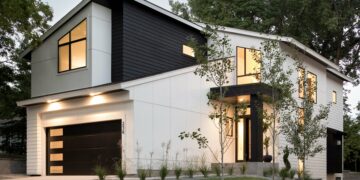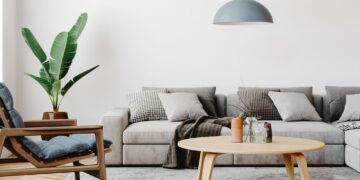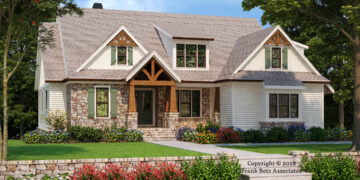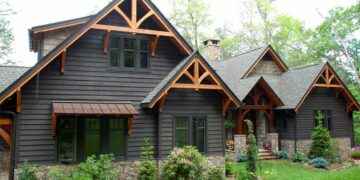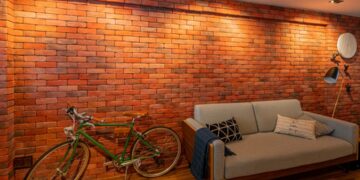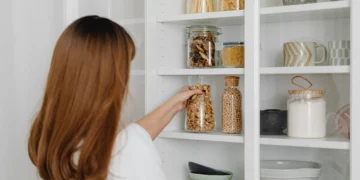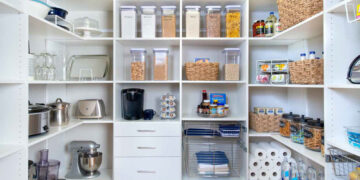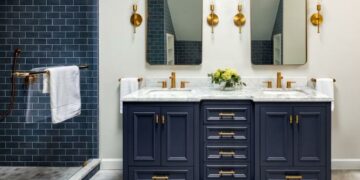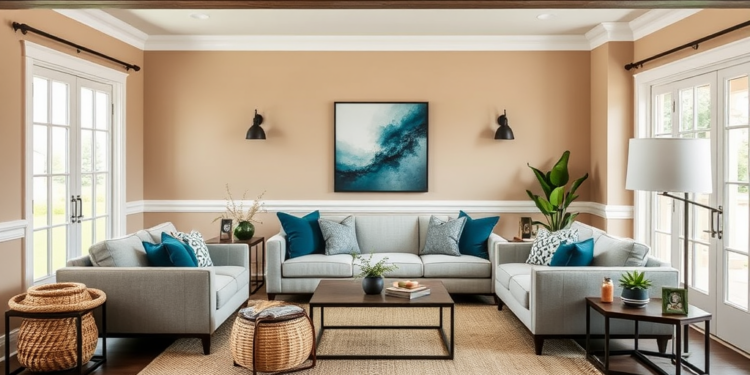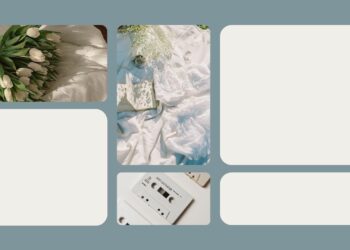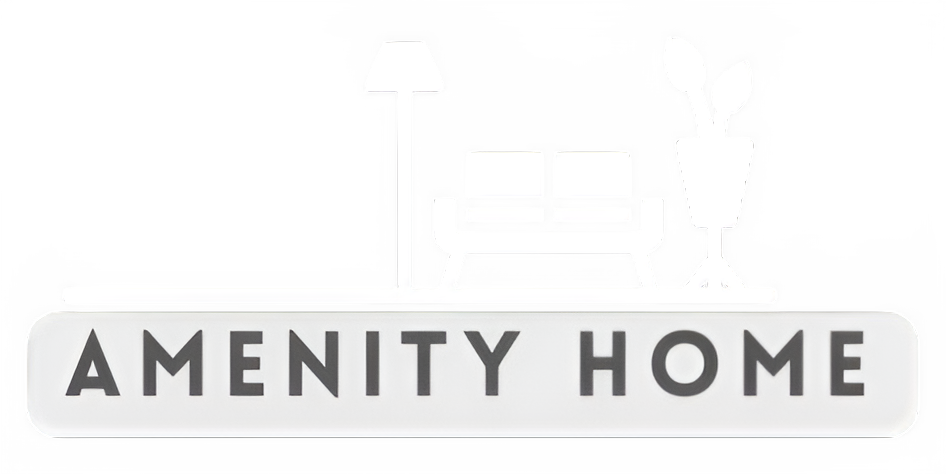Benjamin Moore’s Shaker Beige (HC-45) is one of home design’s most recognized warm neutral paint colors.
As paint color trends shift toward cooler grays and modern neutrals, you might wonder if Shaker Beige still fits in today’s homes.
This color has unique characteristics that set it apart from typical beige options – from its specific undertones to light-reflecting qualities.
This review will examine Shaker Beige’s key features, including its depth, undertones, and real-world applications.
Is Shaker Beige Still in Style?

Let’s talk about where Shaker Beige fits in today’s home design landscape.
While color trends have shifted toward cooler shades, this classic paint color still has its place in modern homes – it’s all about using it wisely.
Current Paint Trends
- Most new homes feature cool grays, and subtle gray-beige blends for a fresh look
- Light, barely-there wall colors that create open, airy spaces
- Paint colors that blend with sleek, modern furniture
When Shaker Beige Shines
- Rooms with warm stone or brick features need its orange-yellow notes
- Spaces where you want a comfortable, welcoming feeling
- Areas featuring classic wood furniture or cream-colored fabrics
- Rooms with existing pink-toned floors or tiles
Skip Shaker Beige When
- Your goal is a clean, contemporary look
- Your room has gray or white-washed flooring
- You need to make a dim space feel brighter
- Your decor includes lots of cool-toned pieces
Think of Shaker Beige as a reliable kitchen tool – not the trendiest thing in your drawer, but perfect for specific jobs.
Many homeowners stick with it because it matches their existing features and creates their desired warm atmosphere. The secret isn’t if it’s “in style” but if it works for your space.
Think about your space’s lighting, fixed elements, and the mood you want to create. These factors matter more than just following the latest trends.
Understanding Shaker Beige

Let’s break down what makes Shaker Beige special in simple terms.
Before we look at all its details, it’s good to know that Shaker Beige has been a go-to paint color for many years because it brings warmth to spaces without being too bold.
Key Things to Know About Shaker Beige
- It’s a warm beige with a light-medium depth (LRV of 54.61)
- Orange undertones show up most, with a slight hint of pink
- Works nicely with cream-colored furniture and brown wood tones
- Shows its true color best in rooms that aren’t too bright
Comparing Shaker Beige with Others
- More depth than lighter beiges, so it won’t wash out as easily
- Warmer than neutral beiges like Muslin
- Less yellow than traditional beiges
- Holds its color better in sunny rooms than paler options
The Role of Undertones in Shaker Beige

Understanding Shaker Beige’s undertones is like getting to know a friend—there’s more to it than meets the eye.
This popular paint color shifts throughout the day, revealing different sides of its personality depending on the light.
Let’s break down how these subtle color changes can work in your favor:
- Lighting changes how Shaker Beige looks – yellow tones pop in natural light, while pink shows up more under lamps.
- Watch how the color changes from morning to night. Morning brings out warm, cozy yellows, while evening light shows soft, peaceful pinks.
- The color mixes well with many styles. Yellow tones match earth colors and wood, while pink tones work with both warm and cool colors.
- Pick trim colors carefully. Yellow-white trim makes rooms bright, and pink-white trim creates a soft flow.
- Test paint samples on different walls. Check the color in morning, noon, and night light.
- Choose accent colors based on undertones. Yellow-based browns look cohesive, while pink-based blues add a nice contrast.
How to Make Shaker Beige Look Modern
Making Shaker Beige feel up-to-date is simpler than you might think. Here’s how to refresh this classic color with modern touches:
Black accents create impact – metal fixtures, handles, and frames add bold, modern contrast.
Deep teal makes a perfect accent color through pillows, art, or a statement chair.
Clean white trim and simple furniture shapes keep the style current and bright.
Natural materials like woven baskets and stone pieces add rich texture.
Modern geometric patterns in rugs and fabrics bring a fresh perspective.
Mixed metals – brass and chrome finishes catch the light and add polish.
Green plants add life – mix large leafy varieties with small succulents.
Flooring Considerations with Shaker Beige

The flooring you select dramatically impacts how Shaker Beige walls look in your home.
Getting this combination right makes all the difference between a polished space and one that feels mismatched.
Here’s what matters most:
Yellow-beige carpets make rooms feel warm and bright. Pink-beige carpets offer a gentler look but can feel flat.
Cool brown hardwoods balance Shaker Beige perfectly. Oak and walnut are top choices.
Greige LVP flooring adds a modern touch while keeping spaces warm.
Light stone or porcelain tile creates brightness. Cream limestone and pale travertine work best.
Dark floors make a bold statement. Black slate or espresso wood creates a strong, intentional contrast.
Mixed-width planks keep the look current. This newer trend works great with Shaker Beige.
Textured floors like hand-scraped wood or brushed stone add depth without looking old-fashioned.
Conclusion
Shaker Beige remains a solid choice for modern homes when used thoughtfully.
This classic color adapts remarkably well to current design trends, thanks to smart pairing with contrasting elements and careful attention to undertones.
The key to success lies in the details—selecting the right flooring, adding contemporary accents, and understanding how lighting affects color throughout the day.
While some might consider beige walls basic, Shaker Beige proves its staying power by providing a flexible foundation for various design styles.
It works especially well with today’s popular organic modern aesthetic, combining clean lines with natural materials.
The final verdict? Shaker Beige isn’t outdated. It simply waits for the right combinations to shine in your space.
What’s your take on using beige in modern design? Share in the comments.


